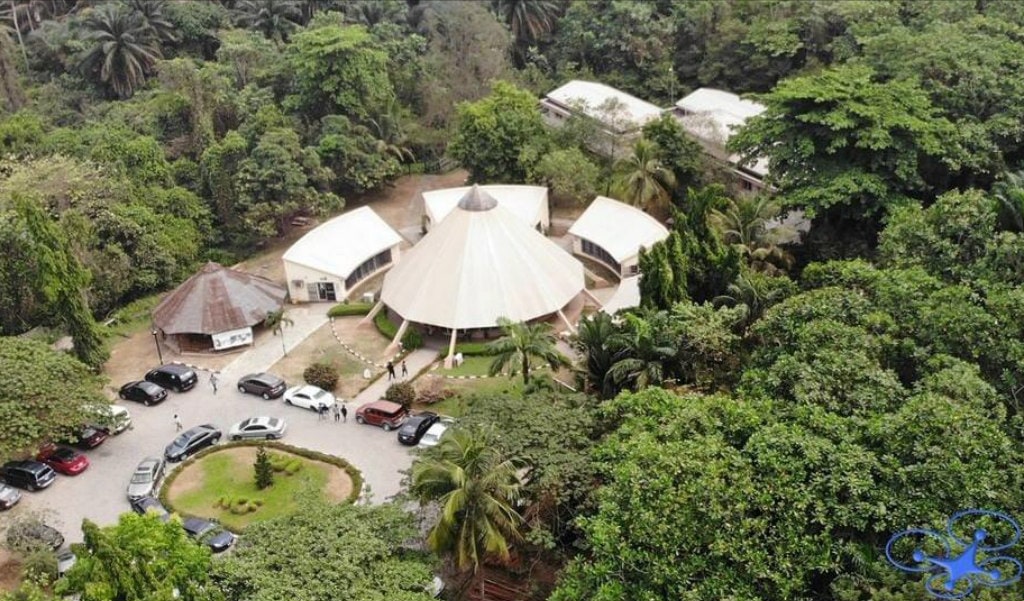[dropcap custom_class=”normal”] I’ve enjoyed writing many posts about the things I like and love about Nigeria as well as providing insight on subjects based off of my experience. This post however is going to cover a subject I don’t like about Nigeria; The Famous Lagos Traffic. There have been so many things that have happened to me or that I have witnessed in my years of riding through Lagos. And the only word that comes to mind to really put it all in perspective is ‘Insanity’. [/dropcap]Continue reading
Seafood Festival Lagos, Nigeria
The Seafood festival Lagos, Nigeria. The beach is a place to be and this is not only for the eternal view of the sea but also for the display of varieties of fishes in different ways on this day. Fish lovers and visitors from Lagos and from other parts of Nigeria came down to have a good time and enjoy the best of fishes gotten by Lagos fishermen.
Lagos fishermen had stands apportioned to them with fresh fishes, smoked fishes and all things marine on display. Maltina and Maggi brands as official sponsors of the day set the atmosphere up for interesting performances for the audience. So with enough fishes to eat and take home, music to dance to and the pepper soup competition which had three contestant winners take home the prize money, it was fun all the way.
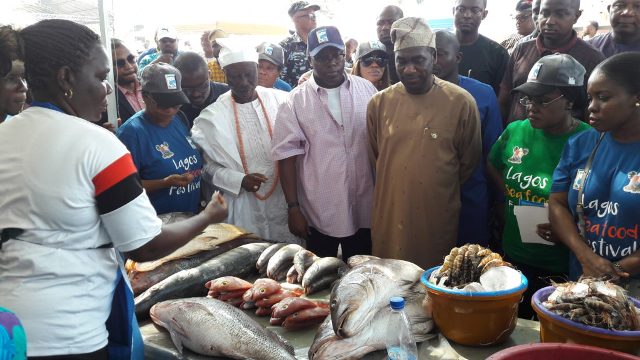
Seafood should smell like the sea, this is the first step in determining the freshness. Close your eyes and imagine you’re on a beach with a gentle breeze blowing. You can smell the salty air and maybe a hint of seaweed. This is how your fish should smell. If you take a whiff and it makes your nose wrinkle or you think it smells ‘fishy’, it’s probably old. The smell won’t improve with cooking.

For the investors and the fishermen cooperatives that took stands and displayed their fishes for recognition, it was a win for them. Several fishermen cooperatives were thankful for the initiative of the state government in bringing about this sea food festival. Many sold their batch of fishes and had to go fish for more to sell. Many gave their contacts out to customers who were willing to keep contacting them after the festival.
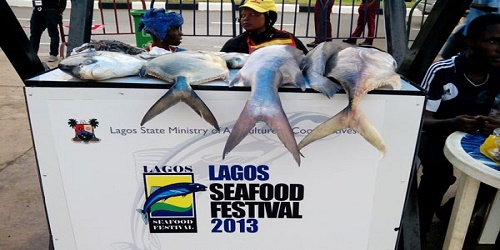
If buying a whole fish, the eyes should be clear and bright and the skin should be shiny and moist with no discoloration (this also goes for fillets with the skin intact). If possible, touch the flesh of the fish; it should be resilient. If an indentation from your finger remains, choose something else. Fresh fish should be stored in the coldest part of your refrigerator (away from lights and the door). It is best if eaten as soon as possible after purchasing it. If you buy it today, eat it today or tomorrow at the latest. If your schedule fluctuates such that you never know when you’ll be home to cook, buy frozen fish. Most seafood is flash-frozen very soon after it’s been cleaned, and as long as it stays frozen there will be very little degradation in quality and flavour.

Gabriel Olufemi, a fishermen cooperative representative from Badagry had this to say about the seafood festival: “It is a good development for us and it presents our trade to the world. Lagos fishermen get to know themselves too so that we all can work together to move our trade forward. We’ve been selling our fishes since morning to the extent that we had to bring more for those who keep requesting. We are grateful to our government for this festival. We wouldn’t limit our work anymore now that Lagos and the world are aware of us.”
Source: http://connectnigeria.com/
Artisans Exhibiting At Lost In Lagos Lifestyle Event
[dropcap custom_class=”normal”] Lost in Lagos hosted a lifestyle event on the 29th and 30th of November where various artisans exhibited. I hope you were able to make it, if not I saved you some pictures as always. [/dropcap]
Continue reading
Facts about Ghana
Here are some facts about Ghana. The name Ghana was adopted from the ancient West African kingdom of Ghana which flourished between 750 and 1068AD and was located in what is now southern Mauritania and western Mali. It is believed that the Akan of modern day Ghana originally came from the area of this ancient empire.

Lake Volta in the centre of Ghana is the largest man-made lake in the world. The lake covers 45% of the Ghana’s total land area.
The Asantehene is the traditional rule of the Ashanti people and the most prominent traditional ruler in Ghana. The Asantehene rules from Kumasi in the central Ghana and his power is symbolized by the golden stool
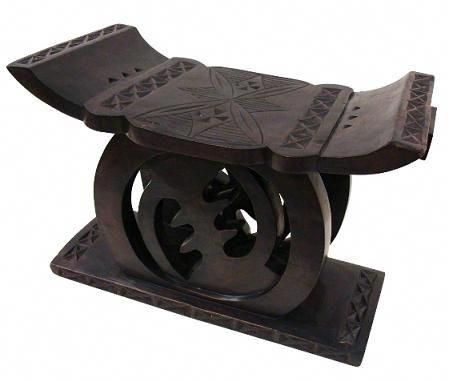
(sikadwa).
Ghana was the first colonized country sub-saharan African to win back its independence, doing so in 1957. The first Prime Minister of Ghana was Kwame Nkrumah, who is particularly remembered for his fight against colonialism and as a founder leader of the Organisation of African Unity (OAU).
Ghana largest national park is the Mole National Park which covers 4660 square km. It lies in the Northern region of Ghana and is home to over 30 different species of mammals including Elephants, Hyenas, Antelopes, Buffalo and various primates.

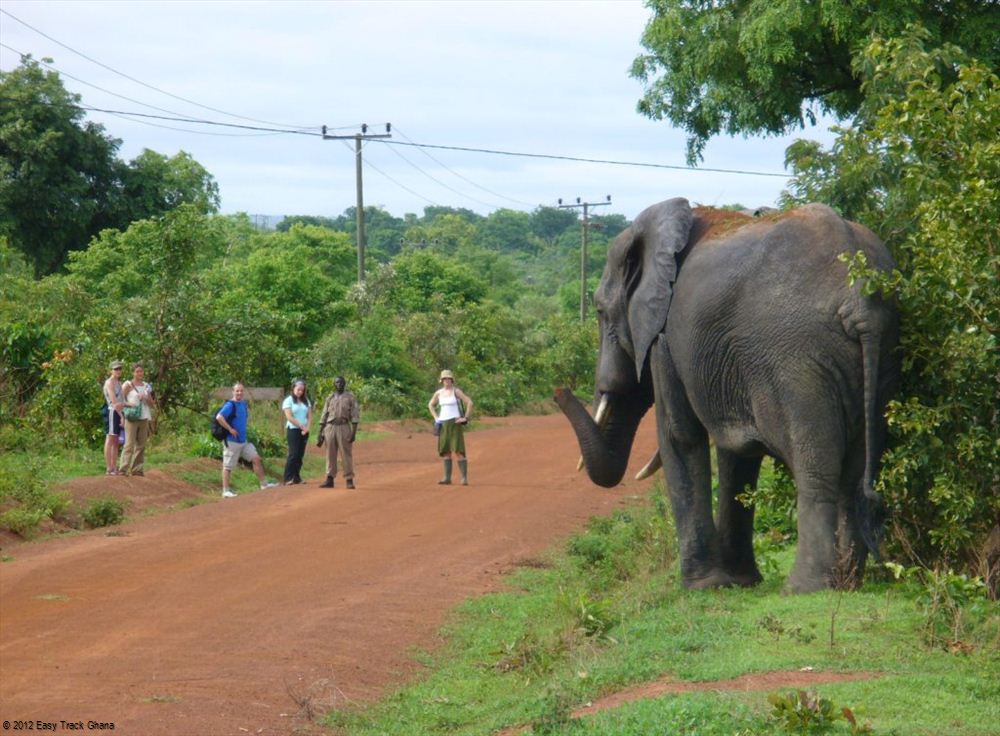
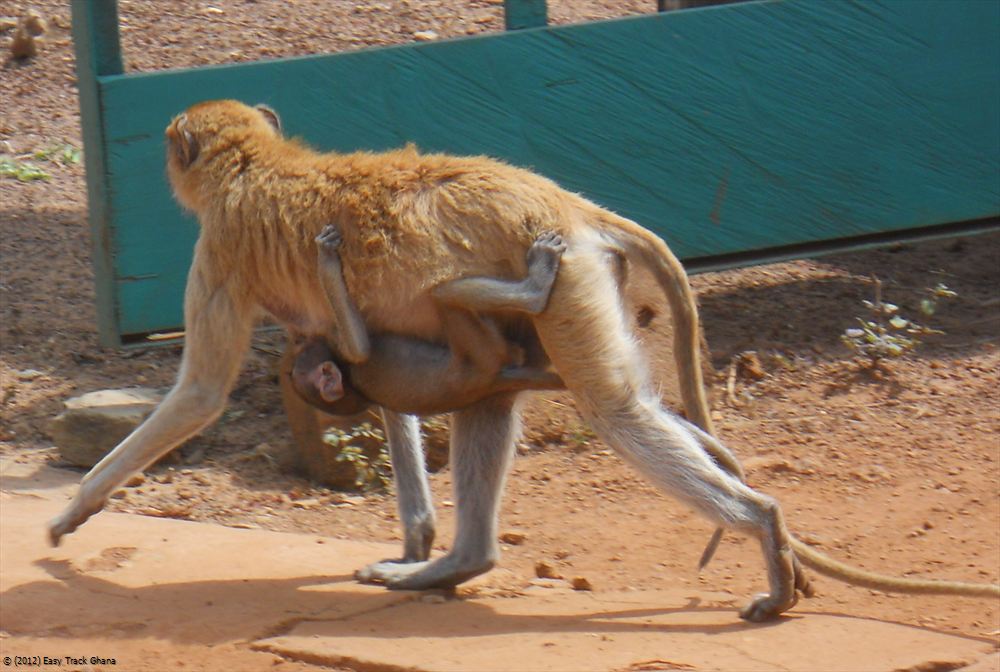
Ghana is made up of ten regions, These are Ashanti, Brong-Ahafo, Central, Eastern, Greater Accra, Northern, Volta, Western, Upper East, Upper West. The most populous region is the Ashanti region in the centre of Ghana and the least populous is the Upper West in the north.
Ghana’s major cities are Accra the capital and largest city, the historic city of Kumasi the capital of the Ashanti region, Cape Coast the old colonial capital of Ghana, Sekondi-Takoradi an important seaport and industrial centre, Tamale the main administrative centre of the north of Ghana and Koforidua another historic Ashanti town.
Another fact about Ghana is that they have been one of Africa’s prominent footballing nations having won the African cup of nations four times (1963, 1965, 1978 and 1982) and reached the World Cup second round on their first appearance in 2006. Famous Ghanaian footballers include Michael Essien, Abedi Pele, Abdul Razak, Samuel Kuffour, Tony Yeboah and Robert Mensah.
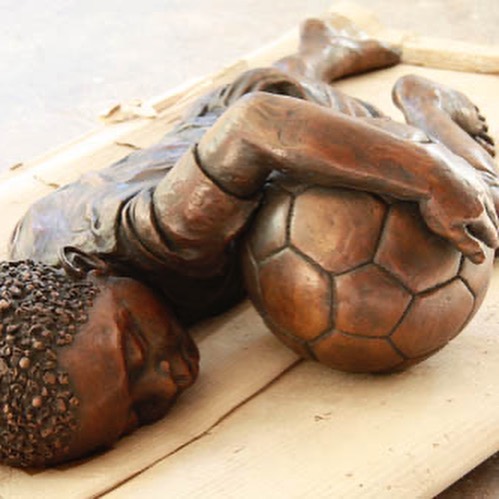
Ghana is considered to be one of the homes of Highlife, a genre of music that was extremely popular in the English speaking West Africa. Popular proponents of the music from Ghana included E.T Mensah, Jerry Hansen and Osibisa amongst others.
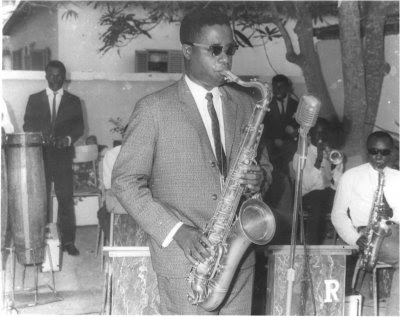
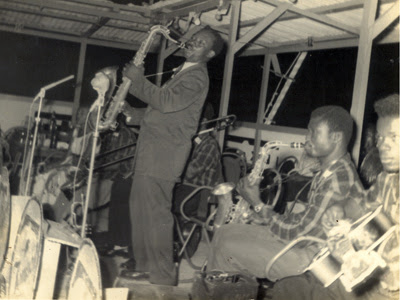
Ghana is one of the major producer of gold in the world and the gold mines in Obuasi in Ashanti region are some of the largest in the world, every day about half a million dollars worth of gold is brought to the surface.
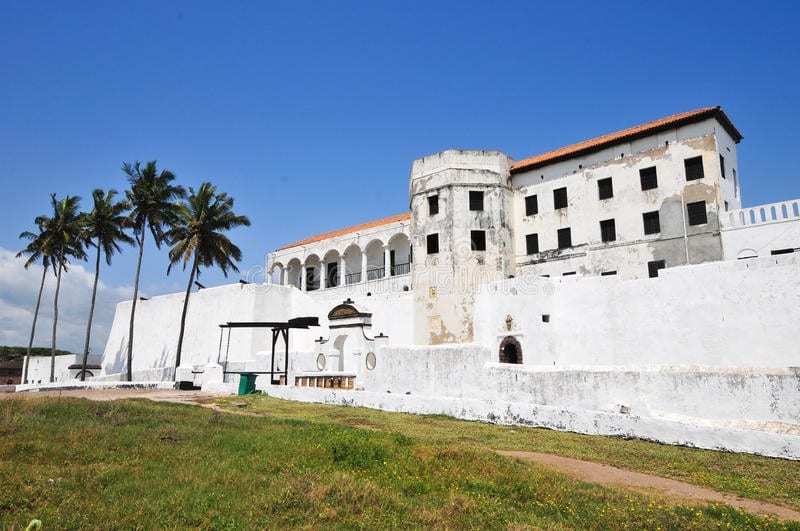
Ghana boasts the title of being the country within sub-Saharan Africa to own the oldest European building called the Elmina Castle. Built in 1482 by the Portuguese, Elmina Castle is situated on the Atlantic shores, particularly in the central region. The name Elmina means the “mines of gold” in Portuguese due to the abundant supply of gold found along the Ghana’s modern day coast
Source: http://tours42plus.com
Pictures: Mole National Park – Ghana’s Largest Wildlife Park (easytrackghana.com)
The Step-Like Kintampo Waterfall, Ghana
The early settlers of Kintampo who discovered the waterfall believed that the site was inhabited by dwarfs, pythons, and bees and legend has it that no individual could go there alone, especially on Fridays, the holy day of the river goddess. Alternatively, the goddess of the river was believed to be a good spirit. In addition to those who go there to see the wonders of nature, or cool off, are those who go there to pray for good fortune and success. Every year during the Moslem festival of sacrifice, thousands of worshippers converged at the falls to fetch the water home for use in religious ceremonies.
The Kintampo waterfall have changed names more than any other water falls in Ghana. In the 1940s it was known as Saunder’s fall, named after British medical resident of Kintampo who tried to develop the site for tourism. Then in 1957 after the country gained independence from the British, the falls were renamed the kwame Nkrumah waterfall, after Ghana’s first President who built a private lodge close by. At the end of the Kwame Nkrumah regime in 1966, the name of the waterfall was finally changed to Kintampo and has ever since remained so.
Features of the waterfall
Kintampo Waterfall in the Brong-Ahafo Region is one of the most beautiful in Ghana. The most memorable thing about it, and one which distinguished it from other falls in Ghana, is the shape: resembling a gigantic staircase, with series of small falls tumbling down the dark rock face, and lined on both sides by evergreen trees.

The Kintampo waterfall is made up three separate falls, stretching over 100 meters, and each is distinct from the other. At waterfall number one, half of the river drops off the face of a cave while the rest pushes through perfectly circular holes it has drilled through the hanging rock. Waterfall number two is marked by a small cataract and layers of large rocks through which the river disappears underground and away from the tour path. It is not seen again until the sudden and spectacular appearance at the main kintampo waterfall, depicting the unique step-like nature of the water falls described above, and thundering with loud noise down into a rock-strewn pool below where the river gathers to continue its journey into the Black Volta River.

The full grandeurs of the falls is best seen from the base. To reach there, visitors descend 154 steps from the edge of the entertainment area to the bottom of the deep gorge cut by the river, from where the magnificent waterfall looms about 30ft (9m) high above, glittering in the foreground. Rare birds like herons, moorhen and wild ducks may be sighted along the Pumpum River and colourful trees around the entertainment area attract hundreds of radiant sunbirds when in bloom.
Near the entrance is a parking space and an entertainment grounds dotted with a few summer huts and shade trees. A modern receptive facility for the site comprising eco-lodges, restaurants, a craft centre and shopping areas is ongoing. Meanwhile, inside Kintampo town are a few medium to budget rated hotels. Visitors may also arrange to stay with local families to experience the everyday life of the local people and for further exploration of the nearby attractions.
Culled from dearghana
Lekki Conservation Centre
Lekki Conservation Centre situated on Lekki Peninsula was established in 1990 as biodiversity conservation icon and environment education centre.
The nature park which covers a land area of 78 hectare is one of Nigerian Conservation Foundation (NCF) foremost conservation project sites.
Lekki Conservation Centre which is normally a 15 minute drive, is under the management of the Nigerian Conservation Foundation and it consists of swamp and savannah habitats.
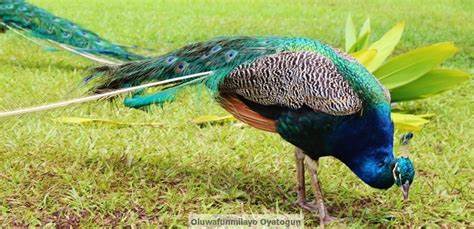
Visitors are ushered into the reserve by a boulevard of coconut trees which leads to a well laid out car and Visitors Park. The reserve is a resort which provides the serenity and beauty of nature in a world class environment.
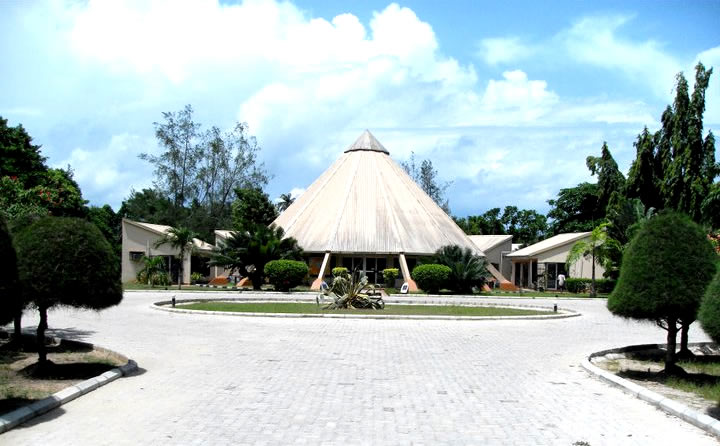
There is a cone-shaped building which serves as the auditorium for lectures, conferences, and seminars. First timers to the resort have the opportunity of seeing rare collection of beautiful pictures of endangered species of animals and plants arranged in glass stands around the oval hall.
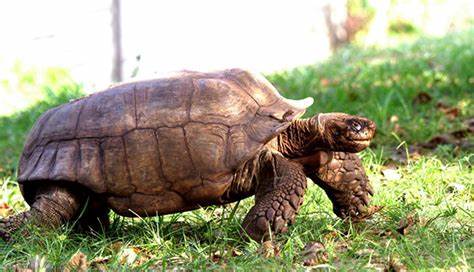
The reserve has 1.8km nature trail behind the main buildings in which you are ushered in by two wooden tracks.
A death-defying 21 metre-high tree platform known as the tree house where you can have a panoramic view of the reserve, visitor’s center, picnic area and children’s playground among the trees and a bird hide overlooking a swamp/marsh which is home to crocodiles and monitor lizards.
In the trees are Mona monkeys and other species of monkeys while the open grasslands are home to bushbucks, Maxwell’s duikers, giant rats, hogs, mongooses and an impressive variety of birdlife. Park rangers are available to be your guide into the reserve.

The Nature Reserve: The nature reserve traverses a mosaic of vegetation types, namely: secondary forest, swamp forest and Savanna grassland. The secondary forest has witnessed significant growth since the centre was acquired and this has a notable impact on the centre. It is this natural secondary forest in which animals like Mona monkeys, bushbucks, giant rats, Maxwell Duikers and others reside. The swamp outlook affords tourists, especially nature lovers’ mouth watering opportunity of sitting back to beyond aquatic and terrestrial ecosystem interaction. On the other hand, the bird hide enables avid bird watchers snipe at unaware avifauna that are wading through the pool overlooked by the hide or foraging within the vicinity.
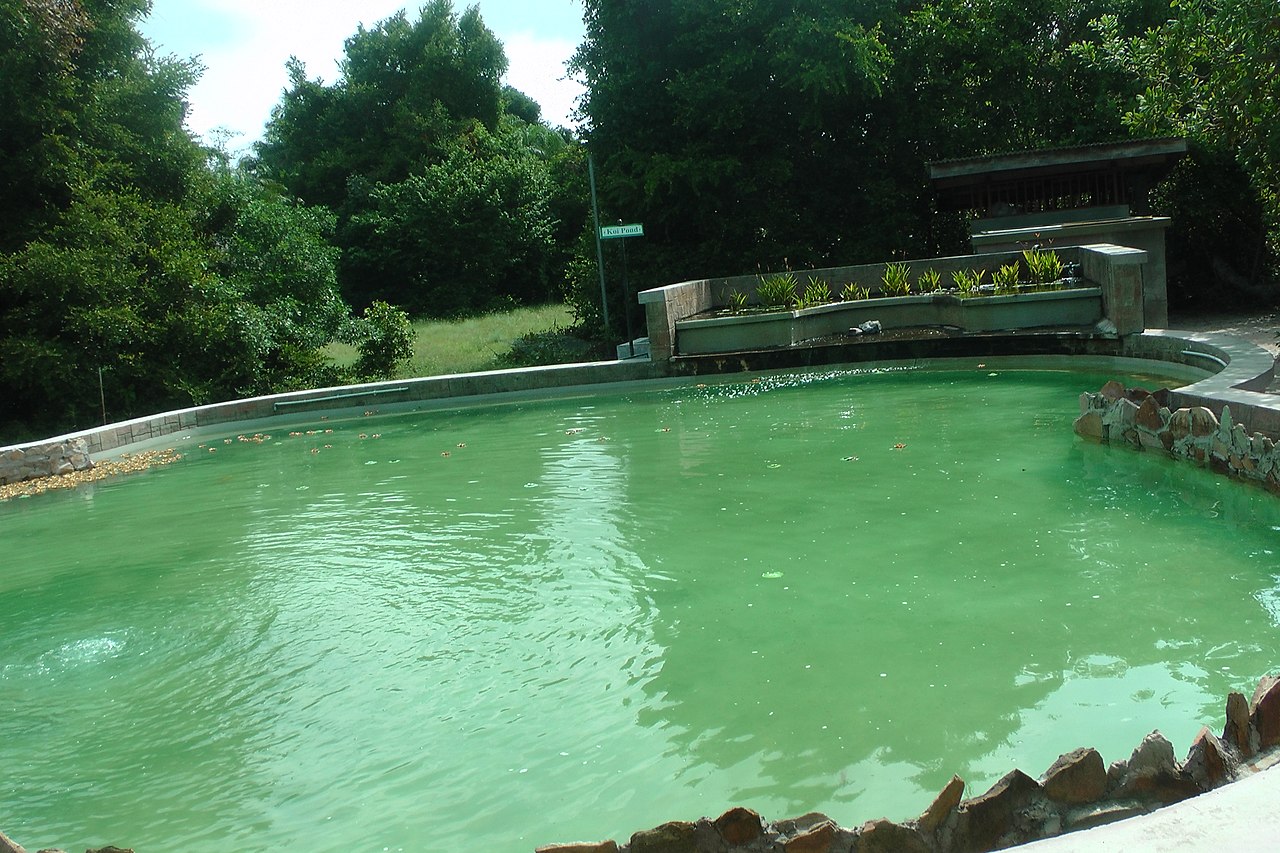
The Tree House: The tree house is one of the most fascinating features one can ever come across in an ecotourism zone. The tree house, stylishly seated on a stout dawadawa tree (Pakia biglobossa) rises above 25m. A well protected ladder is ruggedly mounted behind the tree to enable nature enthusiasts reach to tree house to savour the panoramic view of the tree canopy. The rest stops as the name implies serve as rest points and picnic site for small groups of visitors. They are located at about 250m apart on the nature trail boardwalk.
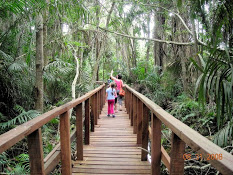
The Trail Boardwalk: A trail boardwalk was constructed in 1992 to the enrich tourists/visitors view of the vast resources of the nature reserve which is encapsulated on a mangrove terrain. The trail stretches a length of 2 Km. some of the side attractions along the trail are swamp outlook, bird hide, rest stops and the tree house. At the end of trail boardwalk seats the nation station – a recreation island in the middle of a forest. It has a semi-enclosed block structure containing the indoor picnic facilities and conveniences. The outdoor has outdoor game facilities mostly for children.
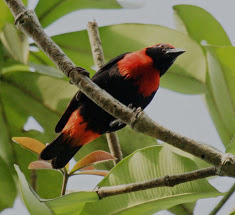
Bird Watching: Visitors get to see some of the African rarest birds with its unique walkway through the swamp forest at Lekki Conservation Centre. Among the birds recorded at the centre are Black Kite (Milvus migrans), Lizard Buzzard, Harrier Hawk, Grey Kestrel (Falco ardosiaceus), Red–Eyed Dove (Streptopelia semitorquata), Blue Spotted Wood-Dove (Turtur afer), Green Pigeon, Wood Land Kingfisher, Allied Hornbill, Piping Hornbill (Bycanistes fistulator), Common Bulbul (Pyanonotus barbatus) etc.
8 Ancient Secrets for Long Healthy Hair
It is often said that with slavery came a depletion in knowledge of hair maintenance. However, traditional African techniques of hair maintenance are actually being used as we speak! Here are some new and old favourites.
1. Rooibos Tea

In truth, I have not found evidence that Rooibos tea was used on hair traditionally in South Africa where it originates. It is certainly a popular caffeine free tea drink. Scientific studies have shown that rooibos tea contains antioxidants and even has antimicrobial effects. It is gaining popularity among naturals who want to use tea rinses on their hair for these reasons.
2. Marula oil
 This is a traditional oil from Mozambique and South Africa. It is popular as a skin moisturiser but can certainly also be processed to a food grade standard and eaten. Like pretty much all natural oils, it contains a large amount of oleic acid and is not ideal for people with scalp problems (e.g eczema, dandruff). It is also known to contain antioxidants.
This is a traditional oil from Mozambique and South Africa. It is popular as a skin moisturiser but can certainly also be processed to a food grade standard and eaten. Like pretty much all natural oils, it contains a large amount of oleic acid and is not ideal for people with scalp problems (e.g eczema, dandruff). It is also known to contain antioxidants.
3. Rhassoul Clay
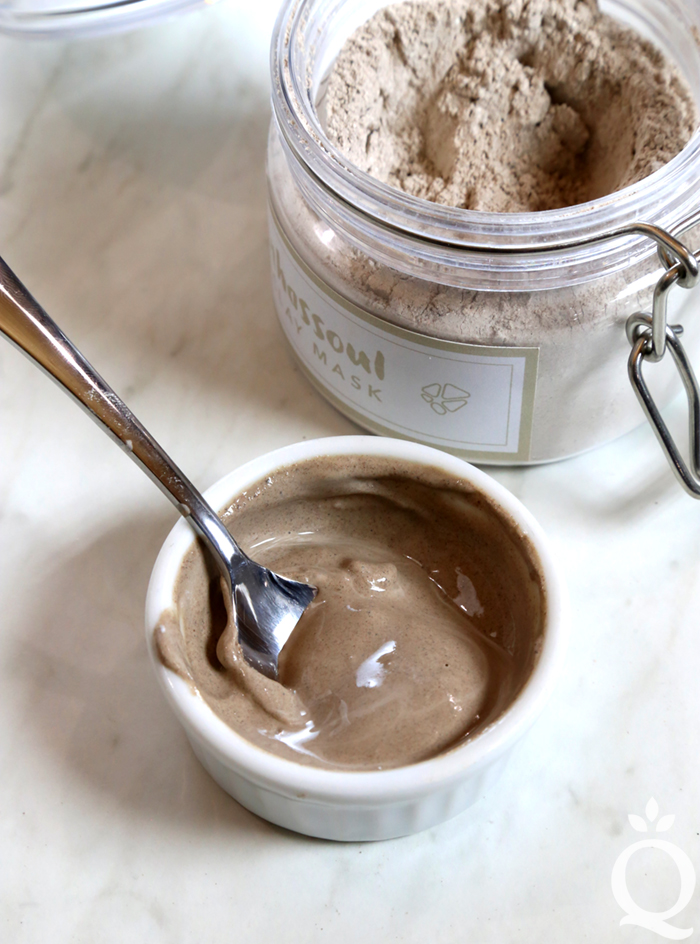
Hailing from Morocco, Rhassoul clay is a traditional mud wash that can cleanse oil from hair. It is not readily explained on how it does this but what is certain is that it can!
4. African Black Soap
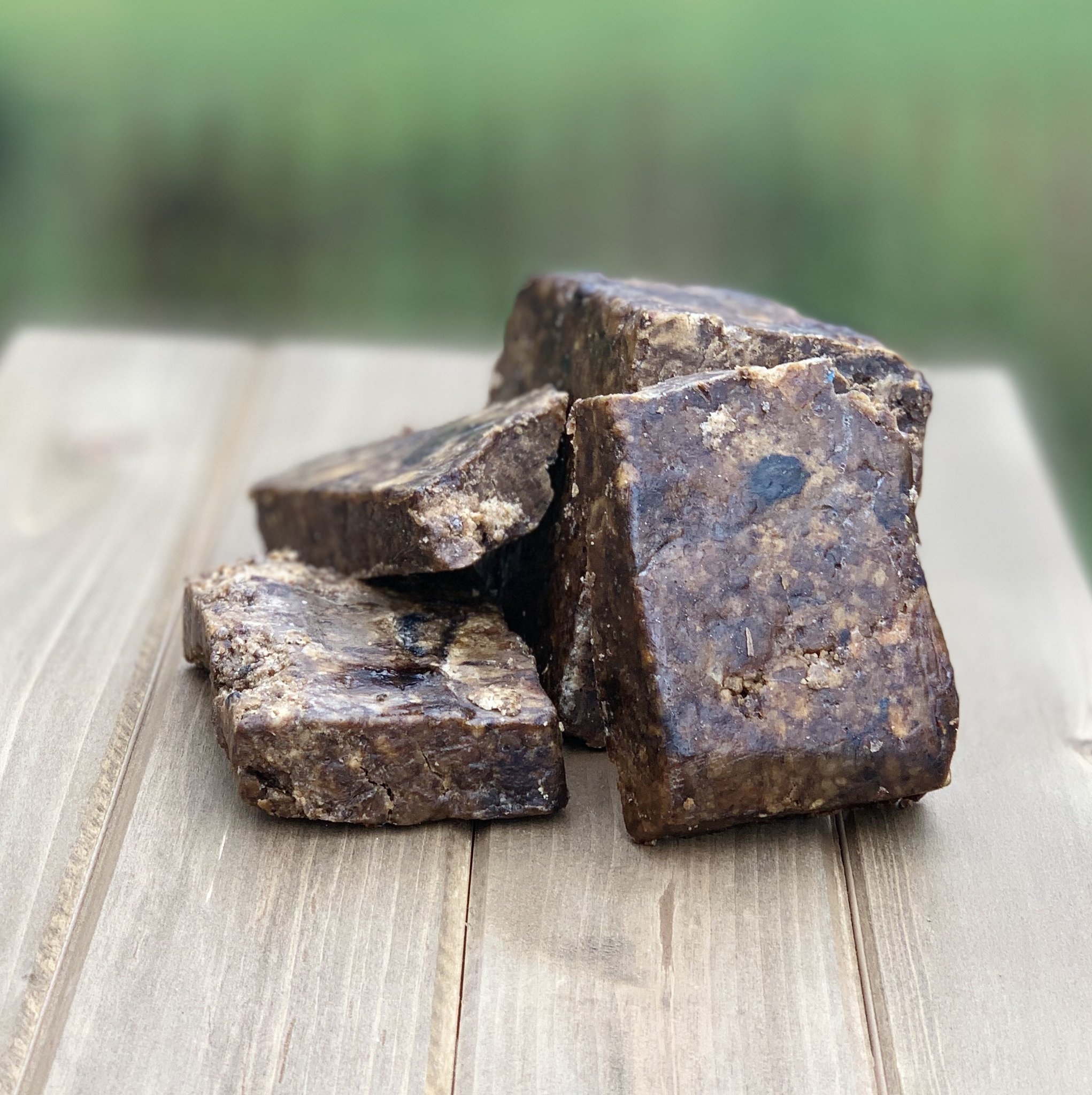 This is a traditional soap from West Africa and is commonly made from oil (shea butter commonly and plant ash. Some say it is gentler than traditional soap but it is important to remember that soap is soap and it will always have a high pH. If that is something you are sensitive to, then do not use it.
This is a traditional soap from West Africa and is commonly made from oil (shea butter commonly and plant ash. Some say it is gentler than traditional soap but it is important to remember that soap is soap and it will always have a high pH. If that is something you are sensitive to, then do not use it.
5. Shea Butter, Avocado Butter, Cocoa Butter, Coconut oil, Argan Oil
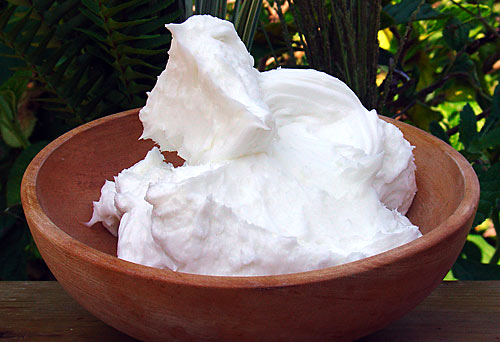
I will not harp on too much about these as they are pretty common knowledge. The one thing that is consistent across the continent is the use of oil to help maintain hair moisure. This is perhaps the bigger and more important story. If you are experiencing dry hair, do try to include an oil/butter within your moisturising routine.
6. Ghee (butter)
 I have previously talked about the use of butter (as in real actual edible butter) for hair care in Ethiopian communities. Thanks to a documentary on traditional people there, I have realised that the butter they use is what we refer to as ghee which is a type of clarified butter that you can find in Indian food stores. The butter is used to help moisturize and/or seal in moisture. Additionally, it’s used to strengthen hair which is possible in part due to the fat in butter, much like in coconut oil, is unsaturated
I have previously talked about the use of butter (as in real actual edible butter) for hair care in Ethiopian communities. Thanks to a documentary on traditional people there, I have realised that the butter they use is what we refer to as ghee which is a type of clarified butter that you can find in Indian food stores. The butter is used to help moisturize and/or seal in moisture. Additionally, it’s used to strengthen hair which is possible in part due to the fat in butter, much like in coconut oil, is unsaturated
7. African threading

African threading is experiencing a renaissance thanks to youtubers such as Nadine of Girls love your curls who has featured a more modern interpretation that does not involve fully wrapping hair in thread and creates a more twisted style. This technique was used traditionally in West and Central Africa to wrap and protect hair as well as create intricate styles. Today, it is used in a similar manner and in addition is a way to stretch hair with no heat.
8. Braiding
 Intricate braiding is a feature of many traditional and modern African communities. There are many African women who traditionally (and in modern day) chose to wear their hair short as it is convenient and fuss free. However, from the Himba women of Southern Africa to Ethiopian tribes of Eastern Africa and even to the Nigerian women of Western Africa, there are many communities who traditionally (and in modern day) showcase long braided hair. Braiding long hair is as much for beauty as shown in the attention to detail as it is for maintenance of hair length. It is a protective style that has withstood the test of time.
Intricate braiding is a feature of many traditional and modern African communities. There are many African women who traditionally (and in modern day) chose to wear their hair short as it is convenient and fuss free. However, from the Himba women of Southern Africa to Ethiopian tribes of Eastern Africa and even to the Nigerian women of Western Africa, there are many communities who traditionally (and in modern day) showcase long braided hair. Braiding long hair is as much for beauty as shown in the attention to detail as it is for maintenance of hair length. It is a protective style that has withstood the test of time.
Culled from blackgirllonghair
Jonathan “Mavua” Lessor, The Painter
[dropcap custom_class=”normal”] Jonathan “Mavua” Lessor ( born on 26 November, 1960 ) hails from Warri, Delta State, Nigeria. He had his early education in Warri, Delta State. In 1986, he obtained a Higher National Diploma (HND), Upper Credit, in painting at Auchi Polytechnic and did his National Youth Service at the Federal College of Education, Abeokuta from 1986-1987. [/dropcap]Continue reading
Acute Paintings Of Lagos City
It is said that this dynamic new city would house at least 250,000 people and provide a workplace for another 150,000, but that it’s still a long way shy of the 17 million population, that is if we are talking about depopulating Lagos. This does not still help the traffic caused by number of vehicles on the roads which according to Lagos State Ministry of Transportation is about 1.1 million.
Now what is the future of Lagos? I stumbled upon some art works online, the urban future as foreseen by a San Francisco-based artist Michael Kerbow. The paintings are a series of acrylic and oil paintings depicting the inevitable result of human over-consumption, over-construction, and over-population of the cities, where things are headed unless we consider our actions and find a way of depopulating our cities .

This picture clearly shows you too many cars on the roads and alternate highways constructed to cater for the increasing number of cars on the roads.

This features a “humongous churning mass of cars” To Kerbow, the painting “is a good metaphor for talking about fossil fuel usage.” A Means to an End, meanwhile, is a “parable about human hubris.” Also inspired by Bruegel, it’s based on the story of Icarus. “Every day our lives are about getting from point A to B,” he says. “When you’re commuting, you’re not being mindful about what’s powering that way of existing.” Hence the smoke stack fouling the atmosphere out beyond the traffic jam.

A look at this image reminds me of how empty many towers and high rise building in Victoria Island Lagos Nigeria are. Most of the buildings were constructed with bank loans and promises that soon as they start to function, big firms and conglomerates would move in and perhaps after a few years, the construction money will start to be made back but unfortunately the rates of spaces in these buildings are so high that companies after moving in because of the posh and glamour start moving out because they cannot continue to pay the high rates, not if they want to stay in business.

In Lagos Nigeria, everyone wants to own a car, oh well, that’s past tense, now everyone not just in Lagos but in Nigeria wants to own a Private jet. According to Punch newspaper NG of Jan 2014, the Nigerian presidency has 11 private jets, and according to a Guardian publication, Nigeria tops lists of private jet owners in Africa. Now looking at this picture, I see danfo buses and ants of cars, a typical old oshodi image. This is the Lagos I know so well and I must commend this artist whom I doubt has never being to Nigeria, or Lagos for that matter.
Now when you look at the sky, you see the jets and planes. This is what will happen when we refuse to weight the consequences of every action we take.
Culled from thebusinessaim





